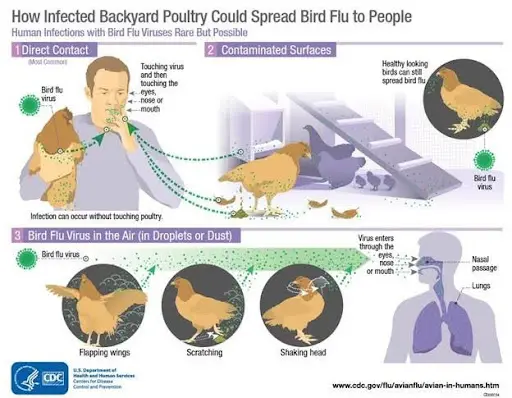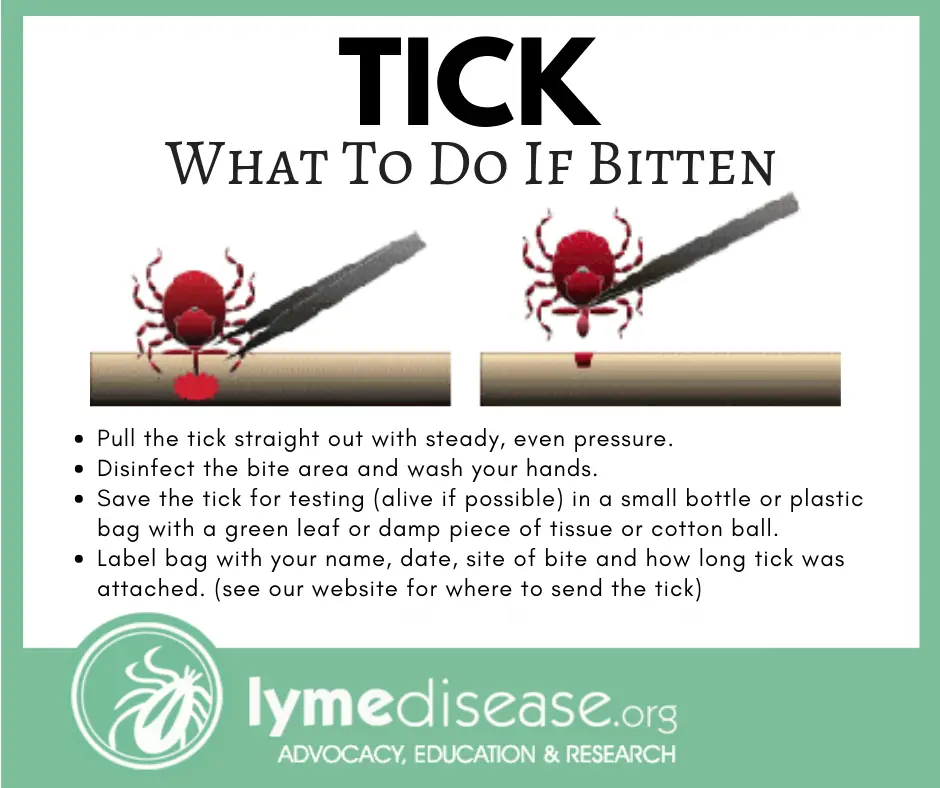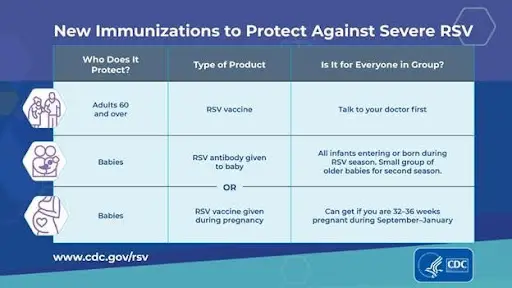Infectious Diseases
An emergent disease is one that has had a recent outbreak or which is either endemic or spreading rapidly. Please be aware of the following health issues we are monitoring in our community.
Respiratory Infections
Influenza, Respiratory Syncytial Virus (RSV), and COVID-19 are all respiratory viruses that spread primarily through contact with droplets from the nose and throat of infected people. Over the past few years, rates of influenza and RSV have increased steadily in the generation population. This may be due to behavioral changes (i.e. mask wearing, social distancing) since the start of the pandemic.
Influenza and RSV have a relatively short time from exposure to infection, typically 1-4 days. Current research suggests that COVID-19 still has a longer incubation time; anywhere from 2-14 days. Symptoms of RSV include cough, fever, stuffy/runny nose, and decreased appetite. Influenza and COVID-19 share those symptoms, along with body aches, fatigue, and gastrointestinal issues.
Bird Flu (H5N1)
Bird flu (H5N1) is caused by an infection with avian influenza type A viruses, which primarily spread among wild aquatic birds and can infect other animals. Highly pathogenic avian influenza (HPAI) viruses cause severe disease and high mortality in infected poultry.
In late March 2024, a human case of influenza A(H5N1) virus infection was identified after exposure to dairy cows presumably infected with bird flu. CDC has reported additional, sporadic human cases in people who had exposure to infected dairy cows. According to the CDC, the current risk to the general public is low.
For more information, follow the link: Defend the Flock

COVID-19
The best way to prevent illness is to avoid being exposed to this virus. However, as a reminder, CDC always recommends everyday preventive actions to help prevent the spread of respiratory diseases, including:
- Avoid close contact with people who are sick.
- Avoid touching your eyes, nose, and mouth.
- Stay home when you are sick.
- Cover your cough or sneeze with a tissue, then throw the tissue in the trash.
- Clean and disinfect frequently touched objects and surfaces using a regular household cleaning spray or wipe.
- Wash your hands often with soap and water for at least 20 seconds, especially after going to the bathroom; before eating; and after blowing your nose, coughing, or sneezing.
- If soap and water are not readily available, use an alcohol-based hand sanitizer with at least 60% alcohol. Always wash hands with soap and water if hands are visibly dirty.
- Follow CDC’s recommendations for using a face mask (when necessary):
- Wear a face mask in public settings where other social distancing measures are difficult to maintain (e.g., grocery stores and pharmacies), especially in areas of significant community-based transmission.
- Face coverings should not be placed on young children under age 2, anyone who has trouble breathing, or is unconscious, incapacitated or otherwise unable to remove the mask without assistance.
- Face coverings should—
- fit snugly but comfortably against the side of the face
- be secured with ties or ear loops
- allow for breathing without restriction
For information about handwashing, see the CDC’s Clean Hands. For information specific to healthcare, see CDC’s Hand Hygiene in Healthcare Settings. You can find more information on Coronavirus from the NYSDOH and the CDC.
Please contact your healthcare provider or school district with any questions regarding returning to work or school.
Influenza
Did you know in 1918, more people died of influenza than in all of World War I?
Influenza is a virus that is spread by respiratory droplets. The droplets are created when a person coughs, sneezes or talks.
The most common symptoms are: high fever, chills, body aches, cough, headache, runny or stuffy nose, and fatigue.
More Flu Information from the CDC
RSV
While Influenza and COVID-19 immunizations are well-known, new immunizations are available to protect against severe RSV. The chart below, sourced from the CDC, provides guidelines for RSV vaccination for the public.
Sexually Transmitted Infections
Chlamydia
Chlamydia is the most common sexually transmitted bacterial infection. The Centers for Disease Control and the New York State Health Department report it is the number one communicable disease reported.
Where does Chlamydia infect you?
- It is found in vaginal secretions in women and semen in men.
- Both men and women can become infected with Chlamydia in their throats and rectum.
What are the Symptoms?
In half of all cases there are no symptoms
- Symptoms in women include vaginal discharge, pain with sex, burning with urination or irregular spotting/bleeding
- Symptoms in men include penile discharge and pain with urination, and uncommonly pain in the scrotum or testis
- Chlamydia infections in the throat or rectum often have few if any symptoms
What is the Risk?
- Chlamydia does not discriminate by income or social status
- A person acquires Chlamydia by having sex with someone who is infected.
- There is a 7-14 day period after exposure before a person who has been exposed tests positive.
- A person who has Chlamydia once can easily become infected again if re-exposed.
- Infected Mothers can pass Chlamydia to their newborns during birth
Untreated Chlamydia in women can cause a pelvic infection known as (PID), which can lead to permanent infertility and greater risk of a tubal pregnancy. In men it can lead to epididymitis.
How do you protect yourself from infection?
- The only 100% way to prevent getting Chlamydia is to be abstinent and not have sex
- The second best way is to use a male or female condom with every act of sex
- The third best way is to get screened and tested with your partner and make sure both are negative before having sex
How often should people be tested for Chlamydia?
- Sexually active women aged 25 and under should get tested every year
- Women and men at increased risk because of multiple partners, and men who have sex with men should also be tested routinely.
What’s involved in the Screening Test?
- Men and women can easily be screened by a urine sample. It is most accurate if you have waited at least one hour since your last void
- A swab test of your throat or anus will detect Chlamydia infection if you are at risk (ask your provider to let you self collect your own rectal swab since research shows this is more accurate).
- Women can also be screened with a vaginal swab.
What’s the Treatment?
- Chlamydia is easily treated with one dose of the antibiotic Zithromax. (If you are allergic you will be prescribed doxycycline twice a day for 7 days.)
- Your partner(s ) will also need to be treated
- The CDC recommends any and all partners in the past 60 days be treated whether or not they test positive for Chlamydia
- You must wait to have sex for 7 days so you do not re-infect each other
New York State permits your provider to give you a script or medicine to treat your partner (s) for Chlamydia if you know your partner won’t get treated. This program is called Expedited Partner Therapy.
Three months after treatment it is recommended that you get retested to make sure your infection has resolved.
If you are positive for Chlamydia we recommend that you be tested for other STD’s and HIV.
References:
- Heymann, D. (2004) Control of Communicable Disease Manual 18th Edition, American Public Health Association.
- MMWR (2015) Sexually Transmitted Diseases Treatment Guidelines, 64 (3) US department of Health and Human Services, Centers for Disease Control and Prevention.
Mpox
Mpox is a rare, viral infection that does not usually cause serious illness. However, it can result in hospitalization or death. Mpox spreads through close, physical contact between people. This means anyone can get mpox. However, based on the 2022 outbreak, certain populations were being affected by mpox more than others, including men who have sex with men (MSM).
Symptoms of mpox can include:
- Rashes, bumps, or blisters on or around the genitals or in other areas like your hands, feet, chest, or face.
- Flu-like symptoms, such as fever, headache, muscle aches, chills, and fatigue. These symptoms may occur before or after the rash appears, or not at all.
New Yorkers can protect themselves by taking simple steps, which are especially important for those who may be at higher risk for severe disease, including people with weakened immune systems:
- Ask your sexual partners whether they have a rash or other symptoms consistent with mpox.
- Avoid skin-to-skin contact with someone who has a rash or other mpox-related symptoms.
- If you are exposed or experience symptoms, make sure to reach out to a health care provider.
- Follow reputable sources of health information, including NYSDOH or CDC.
Travel Related Illness
Ebola
Ebola is a rare viral hemorrhagic disease found in some West African countries. It can infect primates such as humans and monkeys. There are currently no active outbreaks of Ebola, however, it is always good to be informed for potential outbreaks in the future.
More information on Ebola can be found at:
Zika Virus
Zika is a virus spread by the Aedes species mosquito. The most up-to-date information including areas with active Zika, prevention, and how long to wait to conceive after possible Zika exposure can be found at the following links:
http://www.cdc.gov/zika/index.html
http://www.health.ny.gov/diseases/zika_virus
Foodborne Illness
Foodborne Illness, commonly referred to as Food Poisoning, is caused by consuming food contaminated with bacteria, viruses, parasites or toxins which can be present in undercooked or improperly prepared food. Water and other beverages can be contaminated with E. coli, giardia, legionella and more.
Be sure to see our Power Outage page on information for keeping your food safe when the lights go out.
If you believe you were made ill by food purchased at a grocery store, served at a restaurant or other public place, call the Oneonta District Environmental Health Office at 607-432-3911 or contact us at (518) 719-3600. You may not be the only one affected, and your information can help! Someone is available to assist you 24/7.
For more information on symptoms, onset times, and risk factors of foodborne illness, please visit the CDC’s page about food safety: Symptoms of Food Poisoning
Lyme and Tickborne Diseases
Lyme disease, Babesiosis, and Ehrlichiosis are all infections are caused by the bite of an infected tick.
Symptoms of Lyme Disease usually occur between 3 and 30 days after the bite. The most common symptom is a red circular “bulls-eye” rash.
More Information on Lyme Disease
Babesiosis doesn’t always have symptoms, but if symptoms do develop, they are flu-like and begin about a week after the tick bite occurred.
More Information on Babesiosis
Ehrlichiosis can present with flu-like symptoms, confusion, and red eyes. Symptoms usually start 1-2 weeks after the tick bite.
More Information on Ehrlichiosis
To safely remove a tick: Grasp the tick with fine point tweezers as close as possible to the skin. Be careful not to squeeze, crush, or puncture the body of the tick, which may contain infectious fluids. After removing the tick, thoroughly disinfect the bite site and wash your hands. Do not attempt to remove the tick by using petroleum jelly, lit cigarettes, or other home remedies because these may actually increase the chance of contracting a tick-borne disease.
To download the March 29, 2023 presentation by the NYSDOH, click here: State of the ticks_Greene town hall 2023
For more information, call Greene County Public Health Department at (518) 719-3600.

Measles/Mumps/Rubella
- Measles. Measles is an infection caused by a virus. It starts with cold-like symptoms including runny nose; inflamed, red eyes; cough; and fever. A rash that starts on the face and then develops on the body follows 2 to 4 days later. It can result in serious complications, especially in those with weak immune systems.
- Mumps. Mumps is also caused by a virus. It mainly affects the glands. Symptoms are swollen saliva-producing glands in the neck, fever, headache, and muscle aches. A feared complication is that it can affect the testicles in males and cause sterility. It can also cause other serious complications.
- Rubella (German measles). Rubella is an infection from a virus. It causes mild fever and rash in infants and children. Pregnant women who get rubella have an increased chance of having babies with birth defects.
A combination vaccine provides protection against all 3 diseases. Another vaccine, the MMRV, protects against measles, mumps, and rubella, and also against chicken pox (varicella).
For more information, follow this link: Measles, Mumps, and Rubella (MMR) Vaccine
Rabies
Rabies is a virus that affects mammals and can be fatal. It is spread through the saliva of an infected animal, usually due to a bite. Vaccinating your pets protects them and your family.
If your pet is bitten by a potentially rabid animal or if your animal returns to your home injured from an unknown source, contact your veterinarian to get them medical care. Even if your pet is vaccinated, they may require a booster dose.
If you are bitten by an unfamiliar animal, wash the injury with soap and water thoroughly and seek medical attention. If severe or bleeding is uncontrolled, call 911 immediately.
Report ALL bites to us at Greene County Public Health by calling (518) 719-3600 – even if the bite was minor.
If after hours or a weekend, contact Greene County Dispatch by calling 518-622-3344 and ask for the Public Health On Call Supervisor. We will assist you and your physician in deciding appropriate treatment. Try to keep track of the animal that bit you – but safely! If possible, observe the animal from a distance and report this information.
If bitten by a domestic animal that is otherwise healthy, the animal’s owner will be contacted and given instructions for confining and observing the animal for a determined amount of time.
More information on rabies can be found at the Centers for Disease Control (CDC) and the New York State Department of Health.
Vaccinate Your Pets
Public Health Law requires all cats, dogs, and ferrets to be vaccinated for rabies starting at 12 weeks old. Rabies clinics are scheduled throughout Greene County between the months of May to September.


